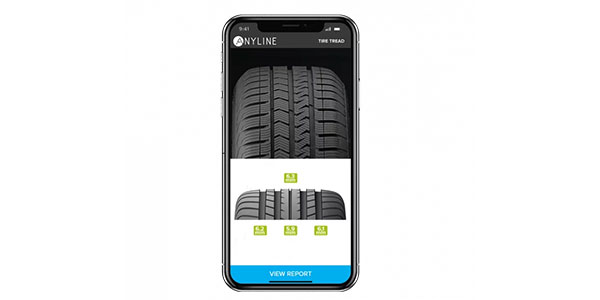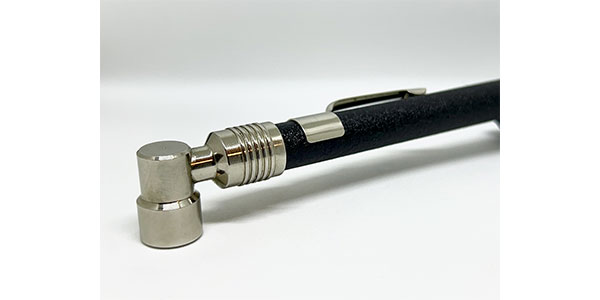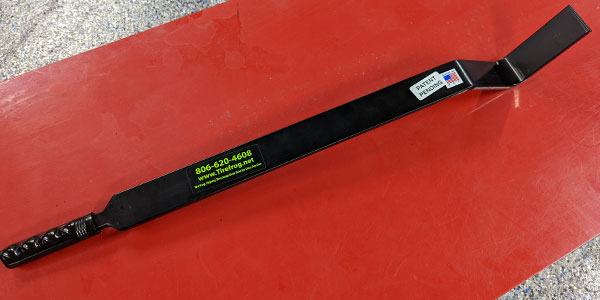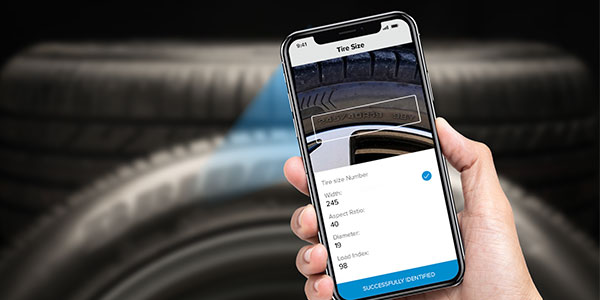By Steve LaFerre
Senior Editor
TIRE REVIEW Magazine
The lowly tire valve operates just the way it did when it first found its way onto an automobile tire back in 1898.
It’s not that complicated to understand a standard (non-TPMS) tire valve, but if a mistake occurs in mounting or demounting, or a hard hit on a curb is not inspected closely, you might want to find your lawyer’s card in the Rolodex.
While it’s most important to approach this subject from a safety standpoint, it’s also handy to keep in mind the benefit to your bottom line that valve stems offer. When it comes to tire valves, buy high quality units for pennies on the dollar and charge your customers what you will.
My only suggestion is that you cover your labor cost and don’t gouge the customer. In fact, everyone I’ve ever talked with has recommended that a new tire valve should be included with every new tire installation; some dealers even give them away as an added sales perk.
Tire valve cores can be made with several different materials, including brass, ceramic and plastic. The majority are machined from brass and then chrome plated. There are at least seven different sizes of valve inserts for today’s tires, and a few dozen different lengths are made.
Regarding tire stems themselves, some are made of metal that has been chrome plated, while others are made of rubber. The rubber valves have been updated through the years and offer much more flexibility than the 100-year-old original.
Valve Stem Recall
All of us remember the May 8, 2008, recall notice involving as many as 6 million defective Chinese-made automotive tire valve stems. Because these pint-sized units perform such a vital task, any news about problems must be taken seriously.
In this case, the stems were distributed in the U.S. to many independent tire dealers through a number of vendors.
If you have installed tires with new rubber valve stems in 2007 and even last year, you should inspect these valve stems for cracks. Examine the valve stem and flex it in a circular motion with your finger. If you see any visible crack or hear air hissing from the base of the valve stem, it is defective and must be replaced.
Failure to replace the valve stem may cause the tire to lose air or suddenly go flat. Sudden loss of air pressure at highway speeds can be very dangerous and may cause the driver to lose control and have an accident or rollover.
Unfortunately, there are no external markings on the valve stems to identify their source. So, the only way to know if the valve stems on a vehicle are from these Chinese makers is to dismount the tires so the numbers on the bottom of the valve stem inside the wheel can be read. The part numbers affected by the recall are TR-413, TR-413CH, TR-414, TR-415, TR-418 and TR-423.
Servicing Stems
Aside from recall issues, valve stems deserve a good look and service every time a customer’s vehicle comes in. While looking at the valve stem, make sure the core is free of dirt and debris, which could cause interference with the valve function.
Once you’ve assured yourself that the core is working properly, the only other caution is not to overtighten the valve core when you re-install it. This is particularly true with metal valve stems. You want the gasket seal to be tight, but you don’t want to ruin the seal by overtightening it. The same holds true with rubber valve stems, but they tend to be a bit more forgiving.
As a general rule of thumb, use the shortest valve stem possible. A longer stem is easier to get knocked off. If the owner of a vehicle is a fast driver, centrifugal forces occurring at high speed can cause a longer valve stem to bend and lose air.
Always check for any signs of corrosion around the wheel’s valve stem hole. This is especially true for alloy wheels with metal valve stems where the wheel is made from one metal and the stem from another. If you see any white powder around the gasket seal, then remove the stem and replace either the seal or the whole valve stem. Also inspect the valve hole for for nicks, burrs or other roughness that could damage a new stem or prevent a leak-free seal.
Another safety step to improve the odds against air loss involves a self-sealing valve stem cap that has been securely screwed down on the valve stem itself. This way, even if the valve core leaks, the air inside the tire will be contained by the cap. Keep in mind that a good valve cap costs pennies, but it can save a great deal of trouble.
Here’s another tip. Never assume the old valve stem is the correct one for the application because it may have been previously replaced.
Always use a replacement valve stem that correctly matches the type of wheel and vehicle application. For example, many alloy wheels require a clamp-in type valve stem with a threaded metal nut.
Also, be sure that when you are removing a valve stem you know whether the vehicle is equipped with TPMS. Attempting to pull out a valve stem with an attached TPMS sensor will destroy the sensor, resulting in a very expensive replacement. On TPMS applications, the tire must be deflated and dismounted to remove the valve stem. In this case, the valve stem may have a seal and an external nut at the base to hold it in place. This nut must be tightened to specification with an inch-lb. torque wrench.
Stem Sense
If you want to make certain you’re buying good tire valve stems, ask your supplier if their product meets the SAE 1205-1206 standard. You should also ask if the valve stem maker is QS9000 or ISO900 certified.
Be alert when you see a no-name valve stem. If you don’t see a manufacturer’s logo or country of origin on the product, be suspicious. If you have a problem with this type of nameless stem later, who will stand behind it? Some low quality, no-name stems will not pass the SAE 1205-1206 ozone test. After only two years of service these valve stems can become hard and brittle, promoting the growth of cracks and leaks.
Quality, name-brand snap in valves from reputable suppliers for passenger car/light truck applications typically cost 16 to 25 cents apiece in bulk quantity vs. something in the neighborhood of 11 to 12 cents each for “no name” imported stems in bulk.
Ironically, some people think that the low price of a complete valve assembly may be one reason why its importance is so often overlooked. Nothing could be further from the truth. Although the valve stem is the least expensive component in a tire/wheel assembly, it’s also considered one of the most important.








